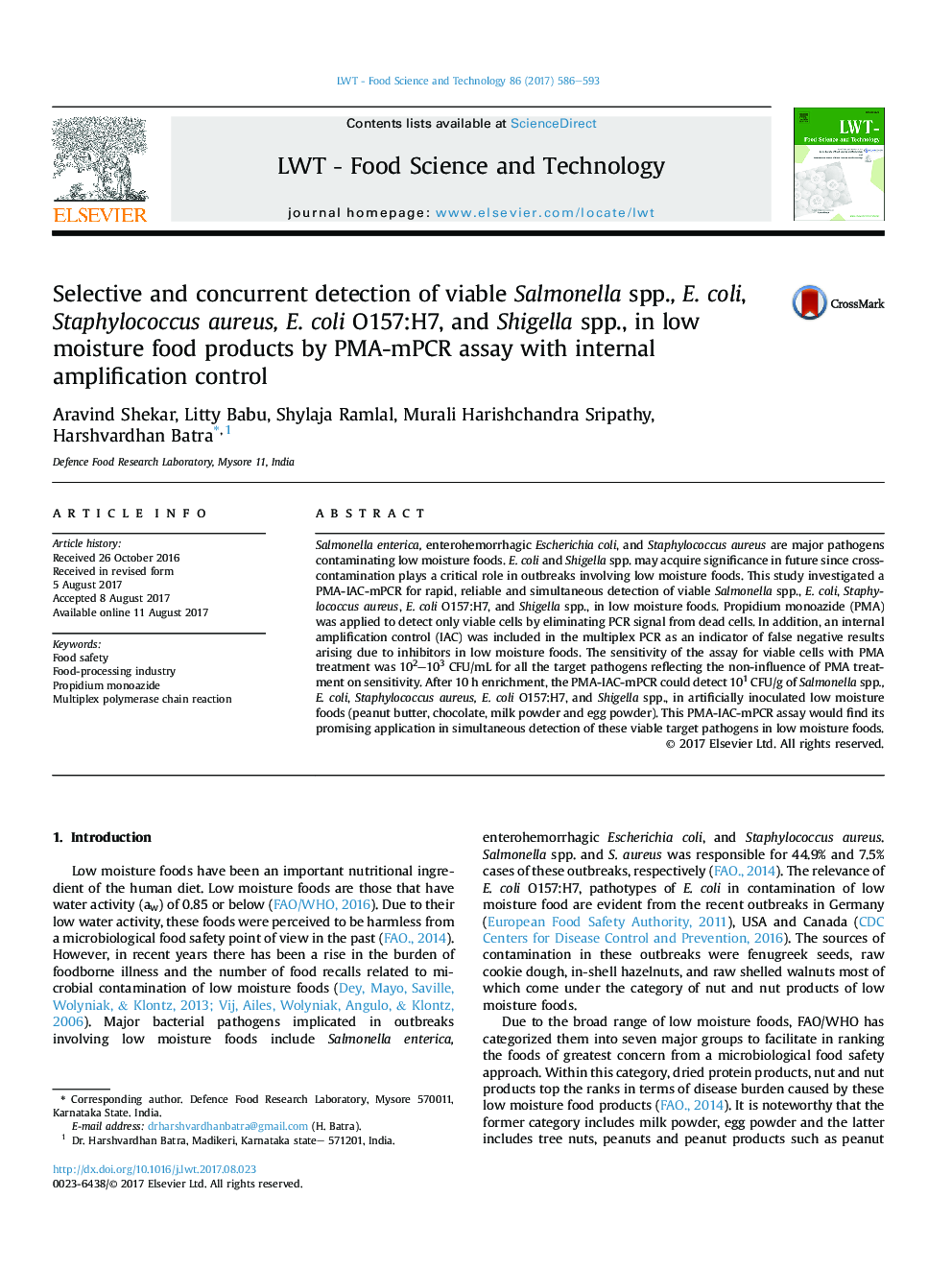| Article ID | Journal | Published Year | Pages | File Type |
|---|---|---|---|---|
| 5768725 | LWT - Food Science and Technology | 2017 | 8 Pages |
â¢Multiplex PCR was developed to detect five major viable foodborne bacteria at once.â¢Propidium monoazide was applied to eliminate interference from dead cells.â¢Internal amplification control was included to indicate the false negative results.â¢The assay could detect 101 CFU/g viable cells in spiked food after 10 h enrichment.
Salmonella enterica, enterohemorrhagic Escherichia coli, and Staphylococcus aureus are major pathogens contaminating low moisture foods. E. coli and Shigella spp. may acquire significance in future since cross-contamination plays a critical role in outbreaks involving low moisture foods. This study investigated a PMA-IAC-mPCR for rapid, reliable and simultaneous detection of viable Salmonella spp., E. coli, Staphylococcus aureus, E. coli O157:H7, and Shigella spp., in low moisture foods. Propidium monoazide (PMA) was applied to detect only viable cells by eliminating PCR signal from dead cells. In addition, an internal amplification control (IAC) was included in the multiplex PCR as an indicator of false negative results arising due to inhibitors in low moisture foods. The sensitivity of the assay for viable cells with PMA treatment was 102-103 CFU/mL for all the target pathogens reflecting the non-influence of PMA treatment on sensitivity. After 10 h enrichment, the PMA-IAC-mPCR could detect 101 CFU/g of Salmonella spp., E. coli, Staphylococcus aureus, E. coli O157:H7, and Shigella spp., in artificially inoculated low moisture foods (peanut butter, chocolate, milk powder and egg powder). This PMA-IAC-mPCR assay would find its promising application in simultaneous detection of these viable target pathogens in low moisture foods.
